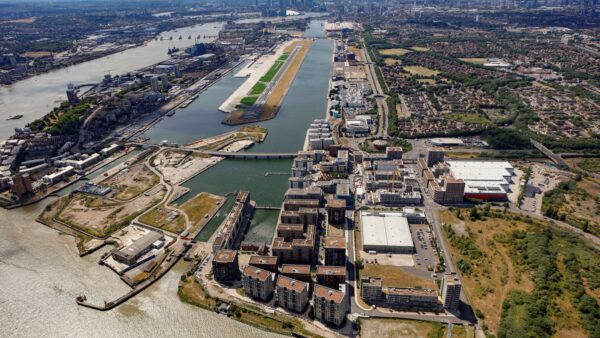Yesterday afternoon administrators arrived at the Hertfordshire-based subcontractor Doyle Group. Many of us will have been shocked and saddened by the news, writes Denise Chevin.
Nearly 300 people worked at the concrete and interiors specialist. Most of these jobs are now likely to be lost. It’s a stark reminder, if yet another one were really needed, of the parlous state the industry is in.
Doyle Group is one of the industry’s biggest names to hit trouble in recent times. With an annual turnover of £79m turnover, it punched well above its weight thanks to charismatic chairman Stef Stefanou and his unsurpassed passion for the industry.
He joined the company forty years ago as a graduate civil engineer and within three years was managing director. As he developed the company, Doyle became known for its quality and innovation and won many large and prestigious contracts. It also enjoyed a well-deserved reputation for looking after its people. “We’re like part of a big family,” staff would often say. Indeed, there were many instances of two generations of the same family being employed by Doyle.
Over the years Stefanou has been a leading light in Construct, the body representing concrete specialists, he chaired Constructionarium , the training scheme set up to give engineering students opportunities to work on site and build structures, and was a founder member of the Movement for Innovation. In terms of the sort of companies the government says it’s trying to encourage, it ticked all the boxes, including taking on young people.
We don’t yet know the details about what tipped the company over the edge and prompted the arrival of the administrators. But it wouldn’t be surprising to find that it was down to the usual toxic cocktail of impatient banks, too many people chasing too little work, and bad debt further up the line. Many a subcontractor has found themselves walking this cash flow tight rope – and until payment practices really do improve across the industry, the lot of subcontractors will forever remain perilous and their fate will remain in the hands of others.
In falling foul of the current economic climate, John Doyle is clearly not alone. The latest construction insolvency figures show 911 construction companies going out of business in the first quarter of 2012. This takes the total to 12,710 construction companies that have failed in the last three years – equivalent to more than 10 a day. National statistics showed an 8.5% drop in construction output in April compared with the same time last year – which means the pain is unlikely to ease yet. And the impact of spending cuts has yet to fully kick in. According to Britain’s top civil servant Sir Jeremy Heywood we’re only 25% of the way toward fiscal adjustment, and could face a decade of cuts.
One certainly has some sympathy with the pickle the government is in – the construction industry bubble would have burst whoever was in power. Spending cuts had to be made; and the euro crisis is out of all of our politicians’ hands. But some of the pain really does seem to be of the government’s own making – particularly its general dithering such as the delays to the schools programme, total uncertainty surrounding PFI and the fiasco over house building. We know mortgages have been difficult to come by. But the dearth in house building has been made worse by an untimely decision to shake up the planning system that has smacked of pig-headedness. One London housing association told me, for example, that it had most of its planning applications turned down because of localism issues.
Let’s hope that Vince Cable, who convened a housing summit this week, can start banging a few heads together. Let’s hope that the government will divert money from planned long term infrastructure too. It won’t save Doyle but it might just come in time for similar like-minded firms that are the heart and the soul of our industry.










